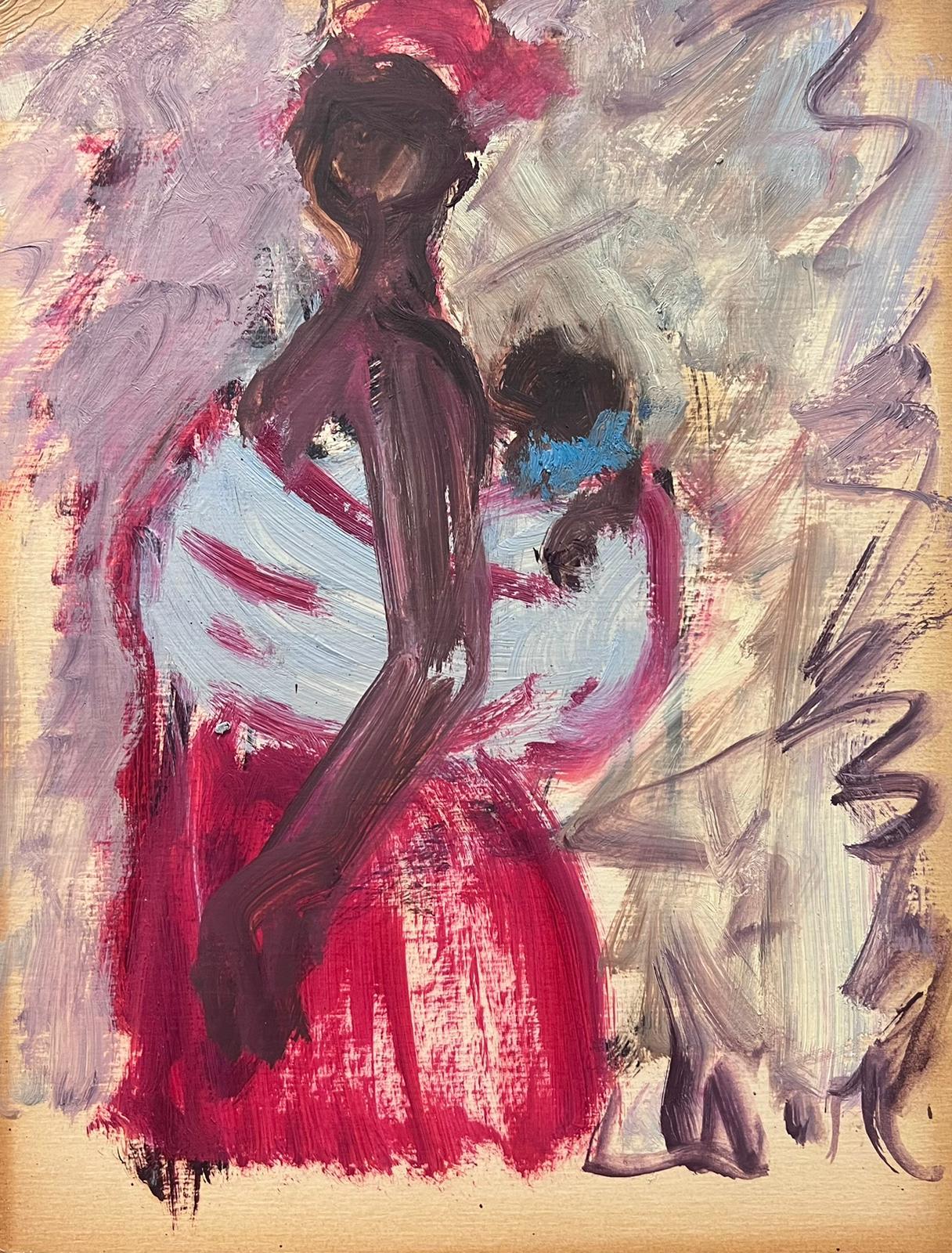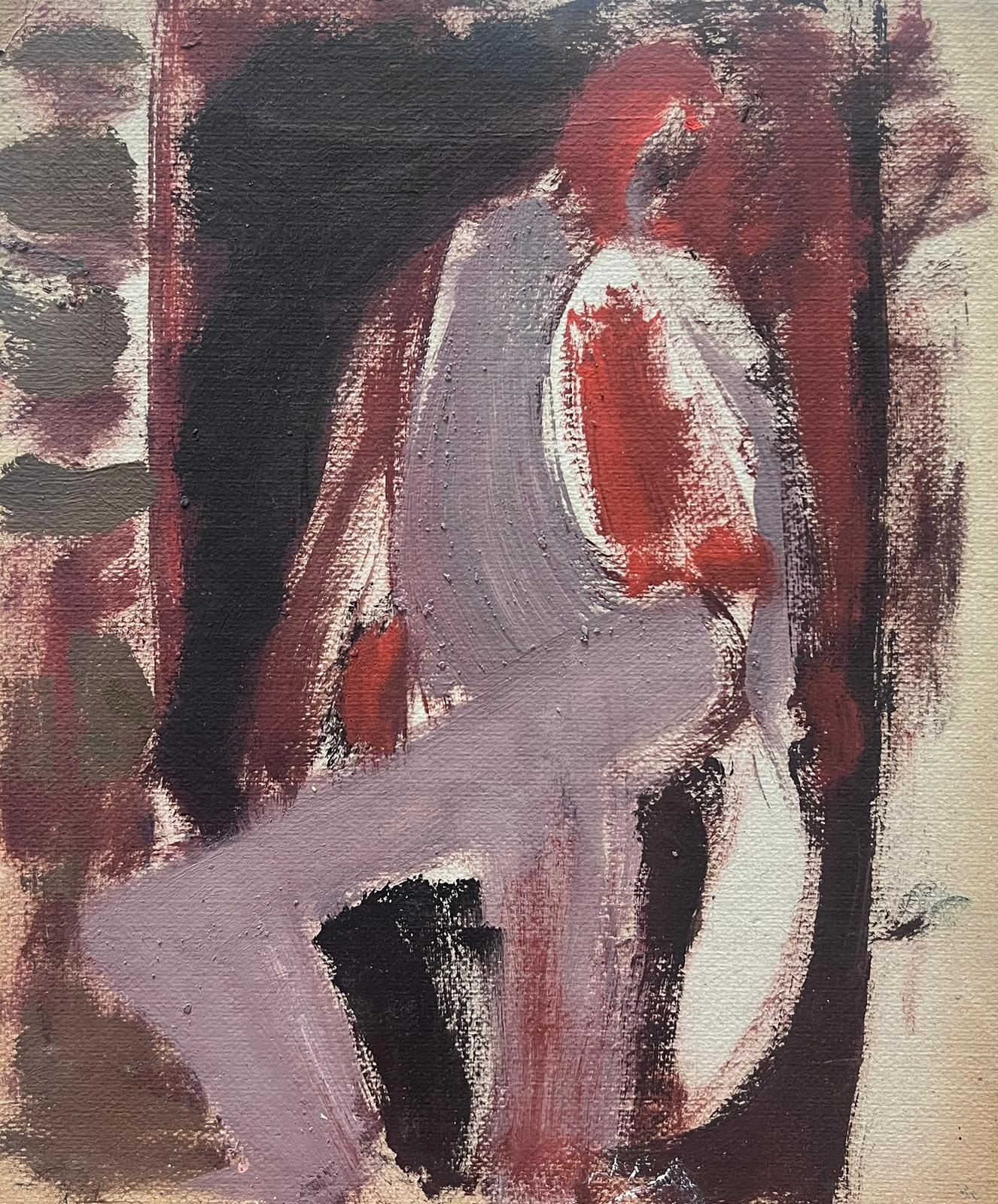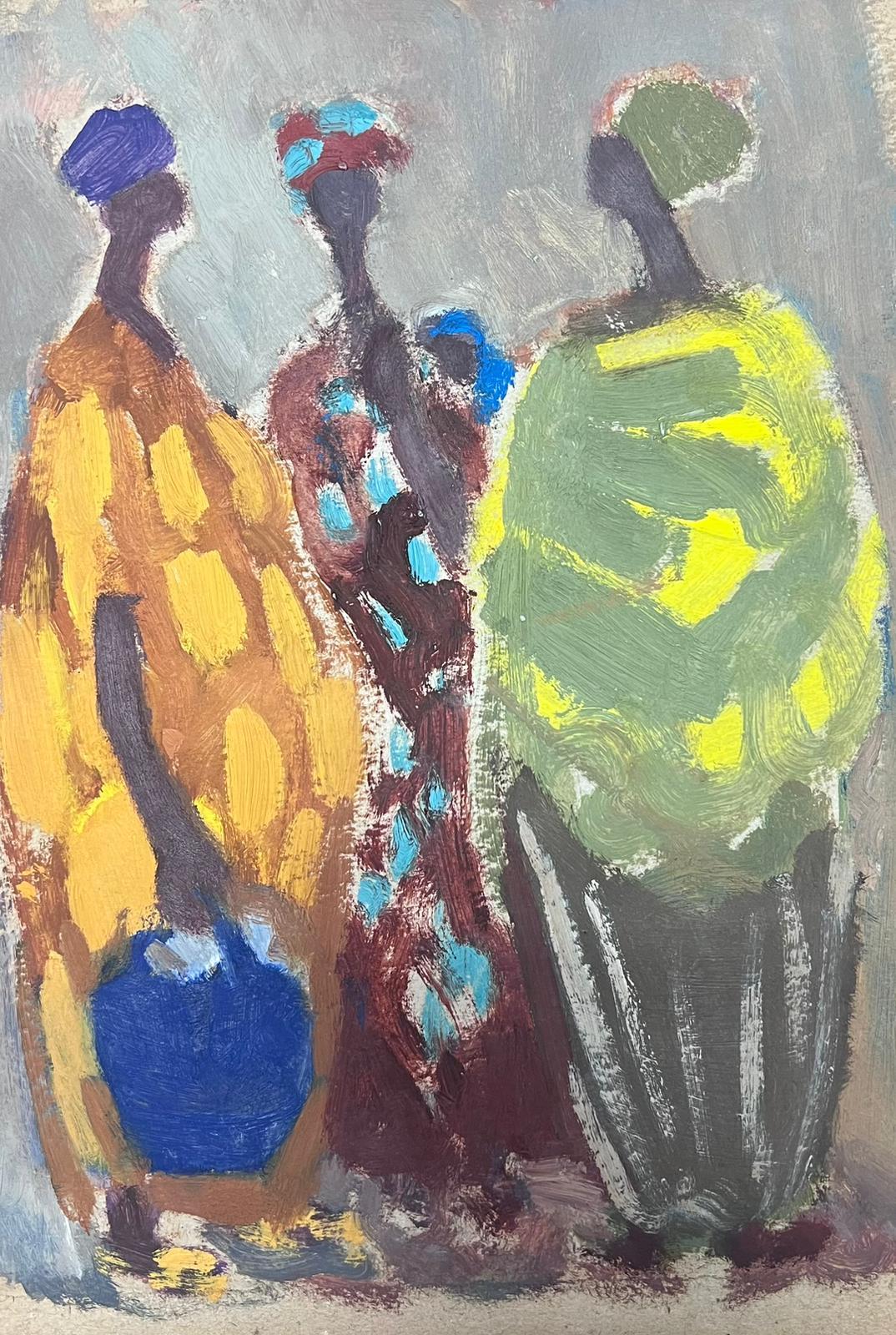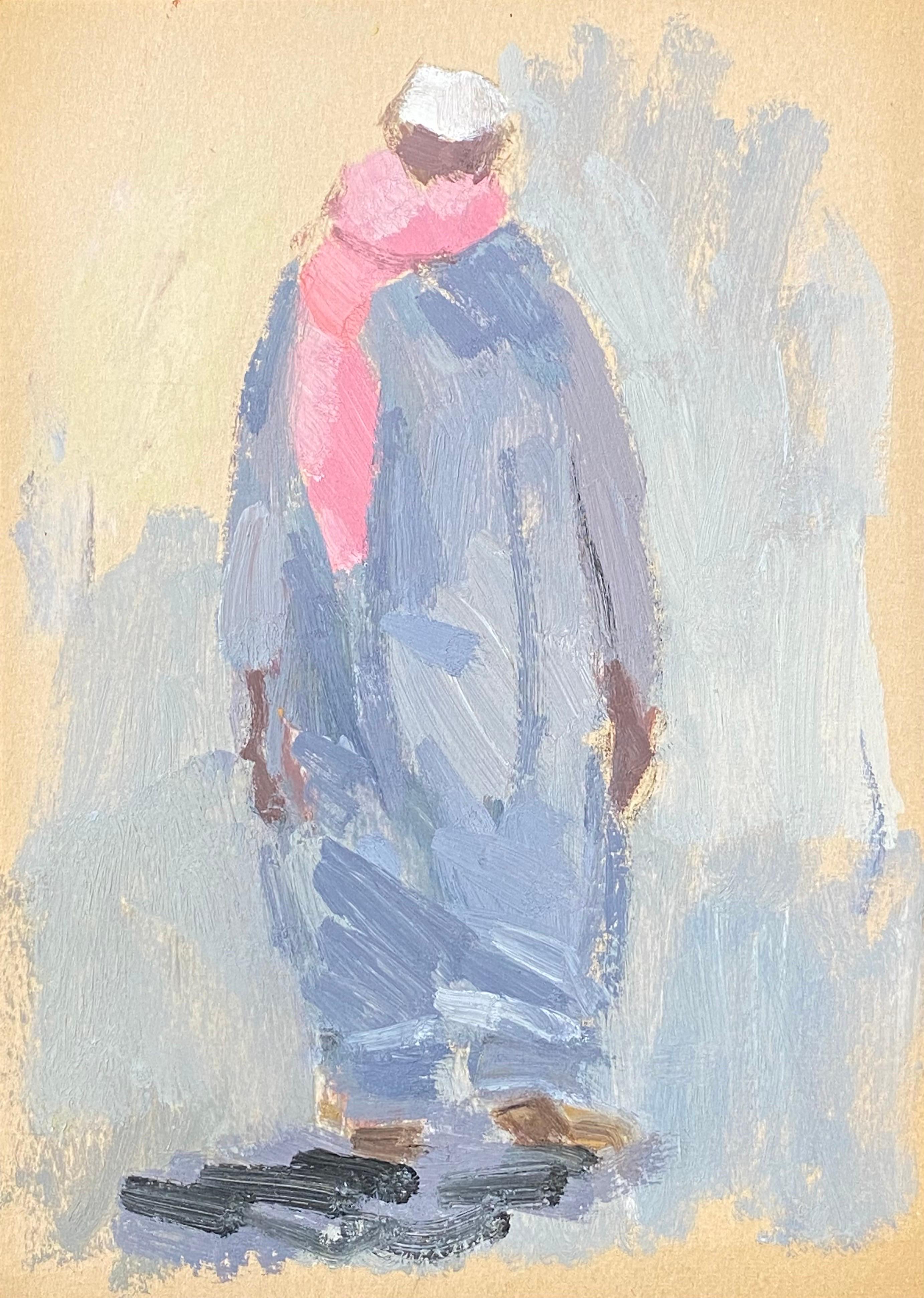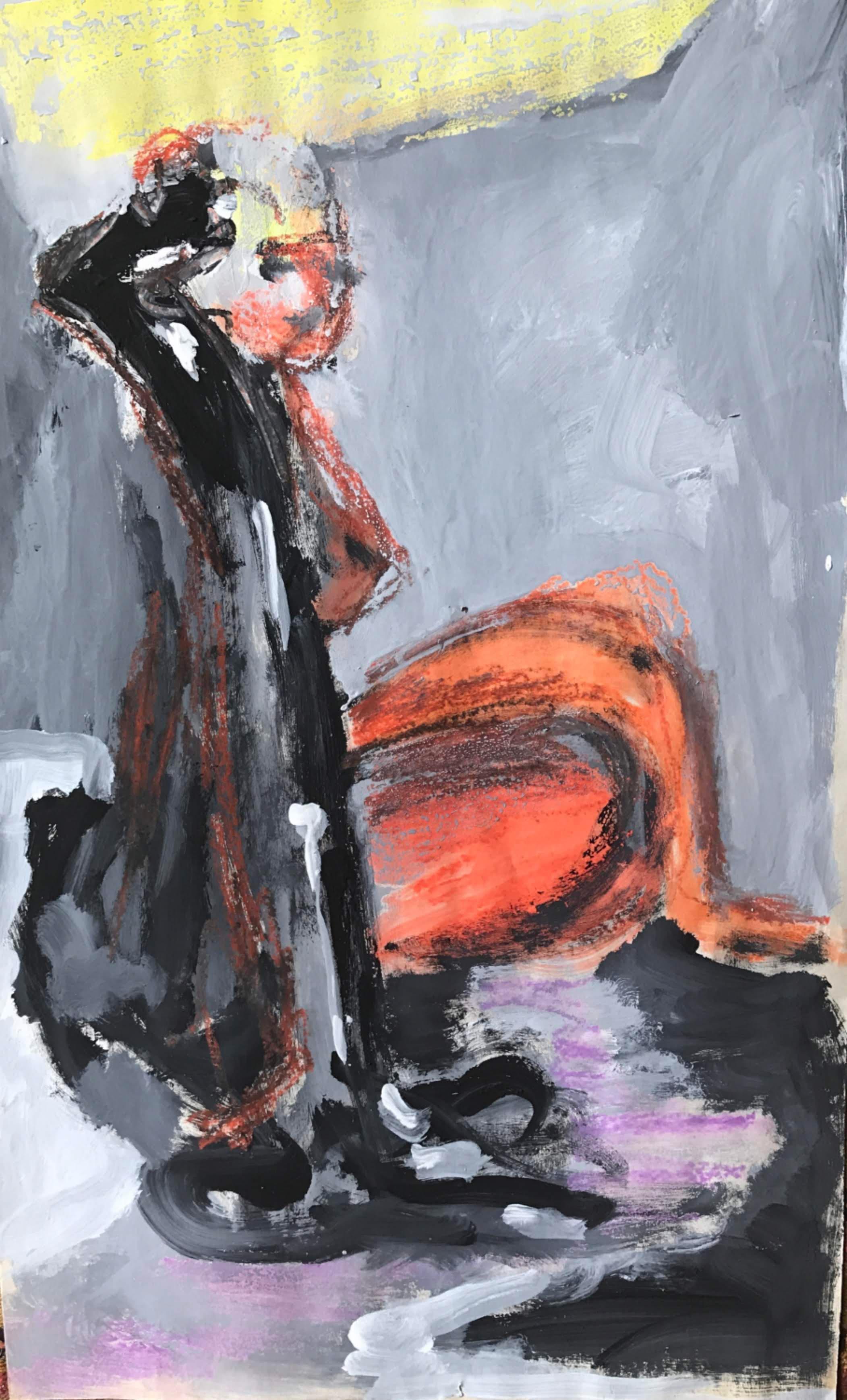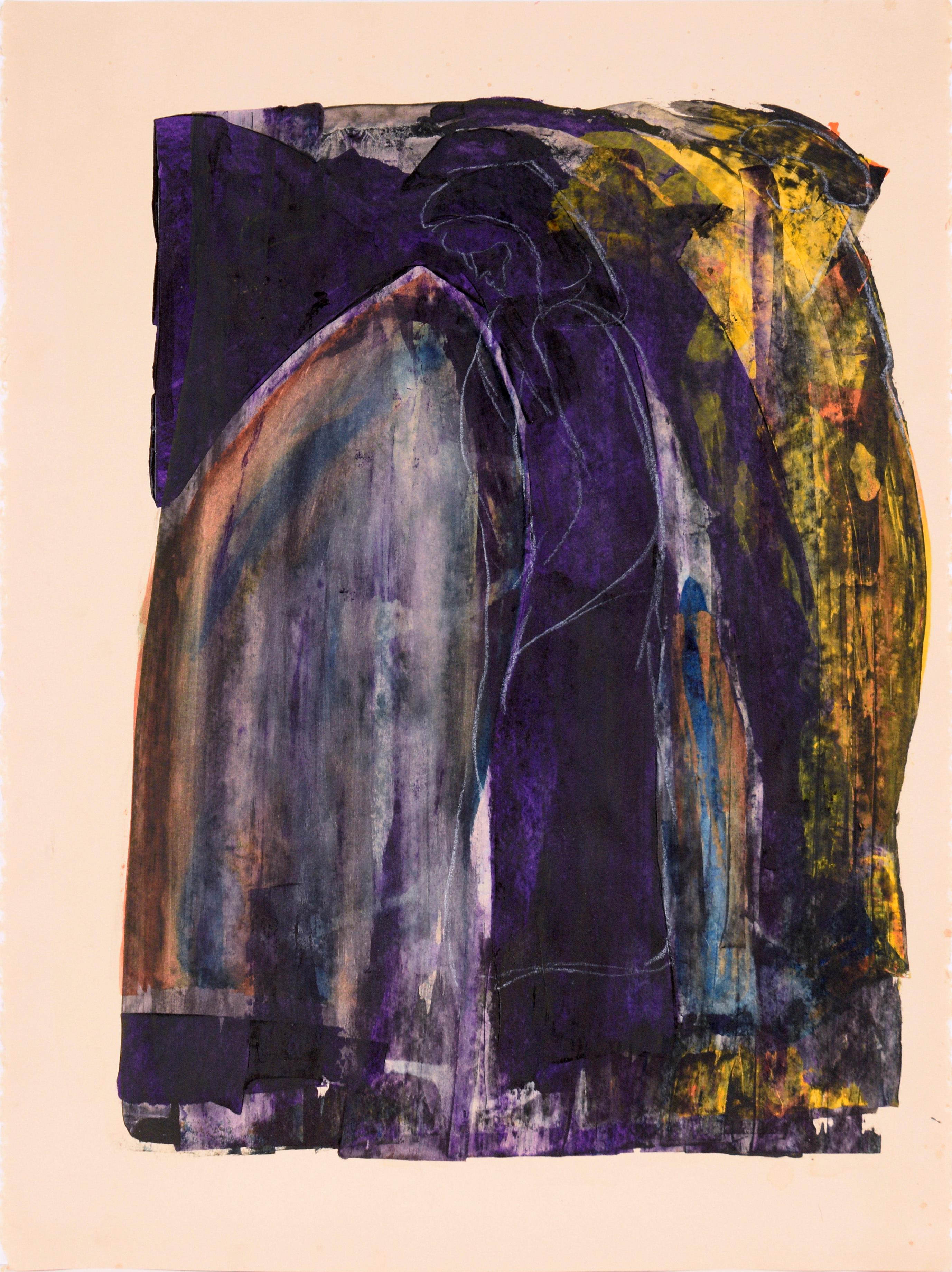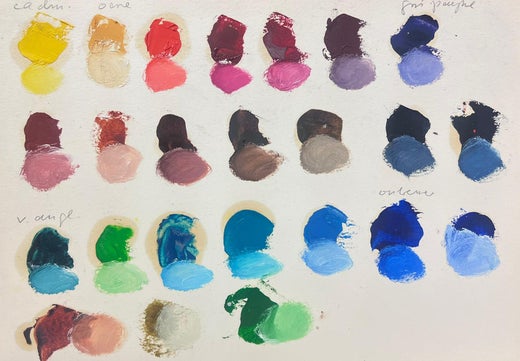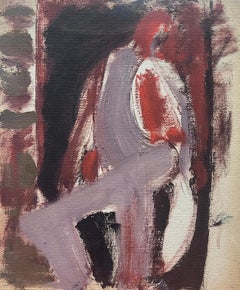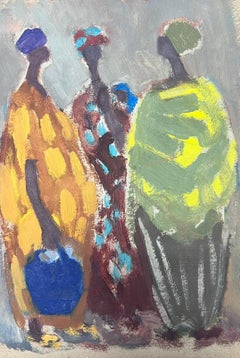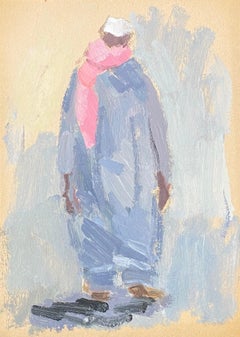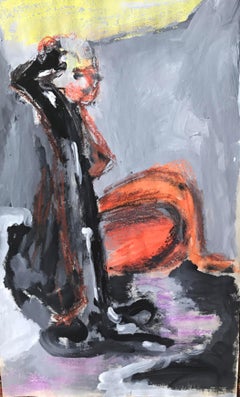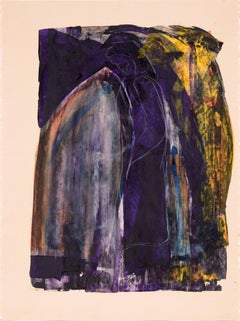Items Similar to 20th Century German Modernist Oil Painting African Model In Purple
Want more images or videos?
Request additional images or videos from the seller
1 of 5
Elisabeth Hahn20th Century German Modernist Oil Painting African Model In Purple20th century
20th century
$521.77
$652.2120% Off
£380
£47520% Off
€443.96
€554.9620% Off
CA$724.53
CA$905.6720% Off
A$790.63
A$988.2920% Off
CHF 414.70
CHF 518.3820% Off
MX$9,602.52
MX$12,003.1520% Off
NOK 5,179.84
NOK 6,474.8120% Off
SEK 4,895.21
SEK 6,119.0120% Off
DKK 3,313.58
DKK 4,141.9820% Off
About the Item
Artist: Elisabeth Hahn (German 1924-2021),
Elisabeth Hahn was born in Dortmund, Germany, where she began her artistic studies. In 1953, she moved to Paris. She continued her studies at the Beaux-Arts in the workshops of Jean Souverbie and Edmond Heuzé, between 1954 and 1959. Since 1962, she has exhibited regularly at the Salons de L'Art Libre, Salon de L'Union des Artistes, and in major Parisian galleries: Galerie Raymond-Creuze, Galerie Cimaise de Paris and Galerie Everarts. She also exhibited regularly in Germany, including in Dortmund and Königswinter-Oberpleis. In her paintings, which tend to be figurative, she always tries to put color and line at the service of the subject, eliminating all the details that could be detrimental to the overall expression. Elisabeth Hahn's painting fully deserves to be rediscovered again.
Medium: oil painting on board, unframed
Size: 11.75 x 8.25 inches
Condition: very good and presentable.
Provenance: all the paintings we have for sale by this artist have come from the artists estate in Paris.
- Creator:Elisabeth Hahn (1924 - 2021, German)
- Creation Year:20th century
- Dimensions:Height: 11.75 in (29.85 cm)Width: 8.25 in (20.96 cm)
- Medium:
- Movement & Style:
- Period:
- Condition:
- Gallery Location:Cirencester, GB
- Reference Number:1stDibs: LU509313824162
Elisabeth Hahn was born in Dortmund, Germany, where she began her artistic studies. In 1953, she moved to Paris. She continued her studies at the Beaux-Arts in the workshops of Jean Souverbie and Edmond Heuzé, between 1954 and 1959. Since 1962, she has exhibited regularly at the Salons de L'Art Libre, Salon de L'Union des Artistes, and in major Parisian galleries: Galerie Raymond-Creuze, Galerie Cimaise de Paris and Galerie Everarts. She also exhibited regularly in Germany, including in Dortmund and Königswinter-Oberpleis. In her paintings, which tend to be figurative, she always tries to put color and line at the service of the subject, eliminating all the details that could be detrimental to the overall expression. Elisabeth Hahn's painting fully deserves to be rediscovered again.
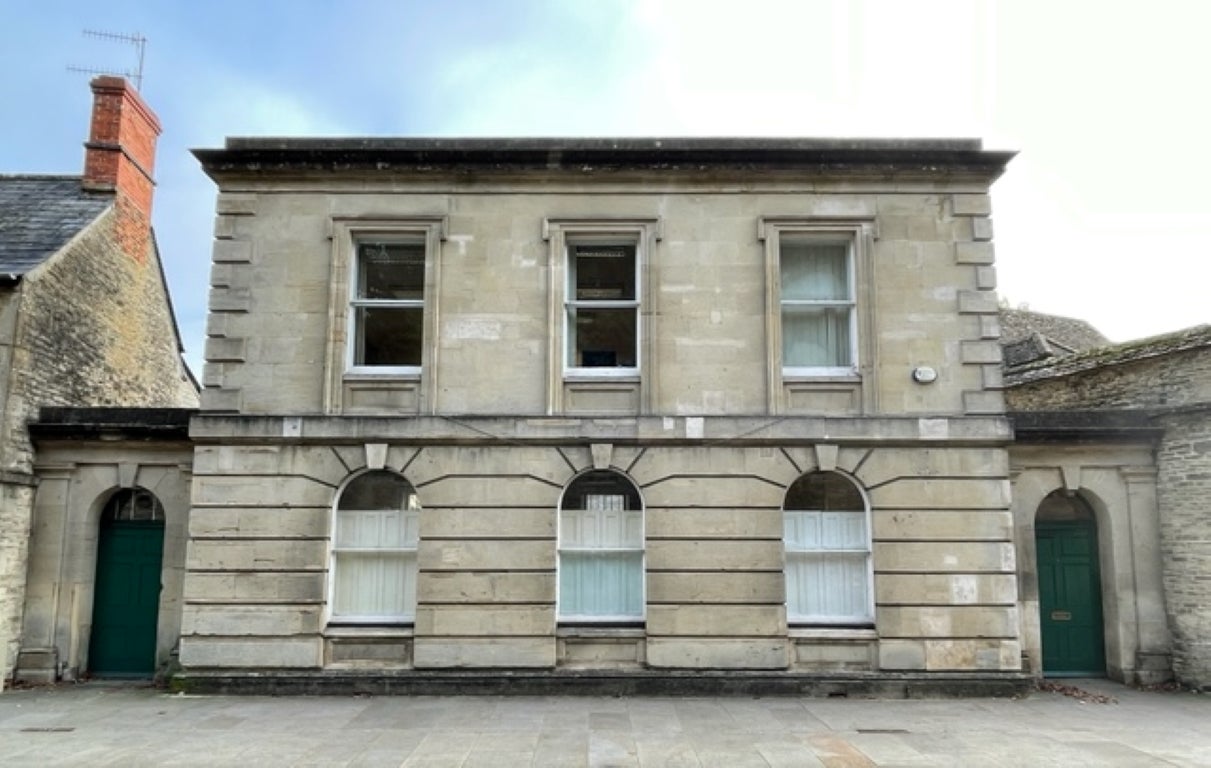
About the Seller
5.0
Platinum Seller
Premium sellers with a 4.7+ rating and 24-hour response times
Established in 1989
1stDibs seller since 2016
4,824 sales on 1stDibs
Typical response time: 1 hour
- ShippingRetrieving quote...Shipping from: Cirencester, United Kingdom
- Return Policy
Authenticity Guarantee
In the unlikely event there’s an issue with an item’s authenticity, contact us within 1 year for a full refund. DetailsMoney-Back Guarantee
If your item is not as described, is damaged in transit, or does not arrive, contact us within 7 days for a full refund. Details24-Hour Cancellation
You have a 24-hour grace period in which to reconsider your purchase, with no questions asked.Vetted Professional Sellers
Our world-class sellers must adhere to strict standards for service and quality, maintaining the integrity of our listings.Price-Match Guarantee
If you find that a seller listed the same item for a lower price elsewhere, we’ll match it.Trusted Global Delivery
Our best-in-class carrier network provides specialized shipping options worldwide, including custom delivery.More From This Seller
View All20th Century German Modernist Oil Painting Portrait of African Woman
Located in Cirencester, Gloucestershire
Artist: Elisabeth Hahn (German 1924-2021),
Elisabeth Hahn was born in Dortmund, Germany, where she began her artistic studies. In 1953, she moved to Paris. She continued her studie...
Category
20th Century Modern Figurative Paintings
Materials
Oil
20th Century German Modernist Oil Painting Purple Nude Model Figure
Located in Cirencester, Gloucestershire
Artist: Elisabeth Hahn (German 1924-2021),
Elisabeth Hahn was born in Dortmund, Germany, where she began her artistic studies. In 1953, she moved to Paris. She continued her studie...
Category
20th Century Modern Figurative Paintings
Materials
Oil
20th Century German Modernist Oil Painting Three African Figures Standing
Located in Cirencester, Gloucestershire
Artist: Elisabeth Hahn (German 1924-2021),
Elisabeth Hahn was born in Dortmund, Germany, where she began her artistic studies. In 1953, she moved to Paris. She continued her studie...
Category
20th Century Modern Figurative Paintings
Materials
Oil
20th Century German Modernist Oil Painting Figure Study in Blue with Pink Scarf
Located in Cirencester, Gloucestershire
Artist: Elisabeth Hahn (German 1924-2021),
Elisabeth Hahn was born in Dortmund, Germany, where she began her artistic studies. In 1953, she moved to Paris. She continued her studie...
Category
20th Century Modern Figurative Paintings
Materials
Oil
Contemplative Figure in Deep Purple Modern Expressionist Composition
Located in Cirencester, Gloucestershire
Contemplative Figure
by Helen Greenfield (British 20th century)
gouache painting on artist paper, unframed
artist paper: 25.5 x 15 inches
condition: overall very good
provenance: al...
Category
20th Century Impressionist Figurative Paintings
Materials
Gouache
$873 Sale Price
20% Off
20th Century German Modernist Oil Painting Sat Figure In Pink Robe
Located in Cirencester, Gloucestershire
Artist: Elisabeth Hahn (German 1924-2021),
Elisabeth Hahn was born in Dortmund, Germany, where she began her artistic studies. In 1953, she moved to Paris. She continued her studie...
Category
20th Century Modern Figurative Paintings
Materials
Oil
You May Also Like
Mid Century Figurative Painting Purple, Orange, Gray, Yellow Pastel and Paint
By Gloria Dudfield
Located in Arp, TX
Gloria Dudfield (1922-2015)
Untitled
c.1960s
Mixed media: gouache, pastel and encaustic on newsprint
12"x19.5" paper cut unevenly, unframed
Unsigned
Gloria (Fischer) Dudfield
July 1...
Category
Mid-20th Century Abstract Mixed Media
Materials
Paper, Pastel, Encaustic, Gouache
Women in Purple and Shadow - Figurative Composition in Acrylic on Paper
Located in Soquel, CA
Nun in the Shadows - Figurative Composition in Acrylic on Paper
A dark abstracted portrait by California-based artist, Ricardo de Silva (American/Brazil, 20th C). This piece is abst...
Category
1980s Expressionist Figurative Paintings
Materials
Paper, Mixed Media, Acrylic
$1,480 Sale Price
20% Off
Egon (figure, portrait, gestural, purple, acrylic)
By Carole Eisner
Located in New York, NY
Acrylic on linen
Category
21st Century and Contemporary Contemporary Figurative Paintings
Materials
Acrylic, Linen
Purple Back: Mixed media painting on paper
By Angela Lyle
Located in Brecon, Powys
Drawn from life this model is obviously at ease which has allowed Angela to present a relaxed and subtle figurative work. Her colors are warm and this is a beautiful, graceful piece....
Category
Early 2000s Contemporary Nude Paintings
Materials
Gouache, Pencil
Framed in Purple -21st Century, Contemporary, Figurative Portrait, Modern Women
Located in Ibadan, Oyo
Shipping Procedure
Ships in a well-protected tube.
This work is unique, not a print or other type of copy.
Accompanied by a Certificate of Authenticity.
About Artist
Elie HATUNGIMAN...
Category
21st Century and Contemporary Contemporary Figurative Paintings
Materials
Canvas, Acrylic
Figure in Purple Abstract
By Daniel David Fuentes
Located in Soquel, CA
Abstract figure in purple by San Jose, California area artist Daniel David Fuentes (AKA, Xavier Lundt) (American, 1978-2016). Bay area abstract expressionist and landscape artist dur...
Category
Early 2000s Abstract Expressionist Abstract Paintings
Materials
Canvas, Oil
$540 Sale Price
20% Off
More Ways To Browse
20th Century Africa Paintings
Western Cowboy Art Paintings
1940s Illustration
American Flag Painting
Antique Oil Paintings Antique Pre 1900 Paintings
Bob Ross
Di Donna
Jean Auguste Dominique Ingres
John The Baptist Painting
Military Oil Painting
Nandalal Bose
Nude Mother
Oil Paintings Feather
Russian Civil War
Stage Design Art
16th Century Painted Panels
Adolf Zardins
At The Moulin Rouge
